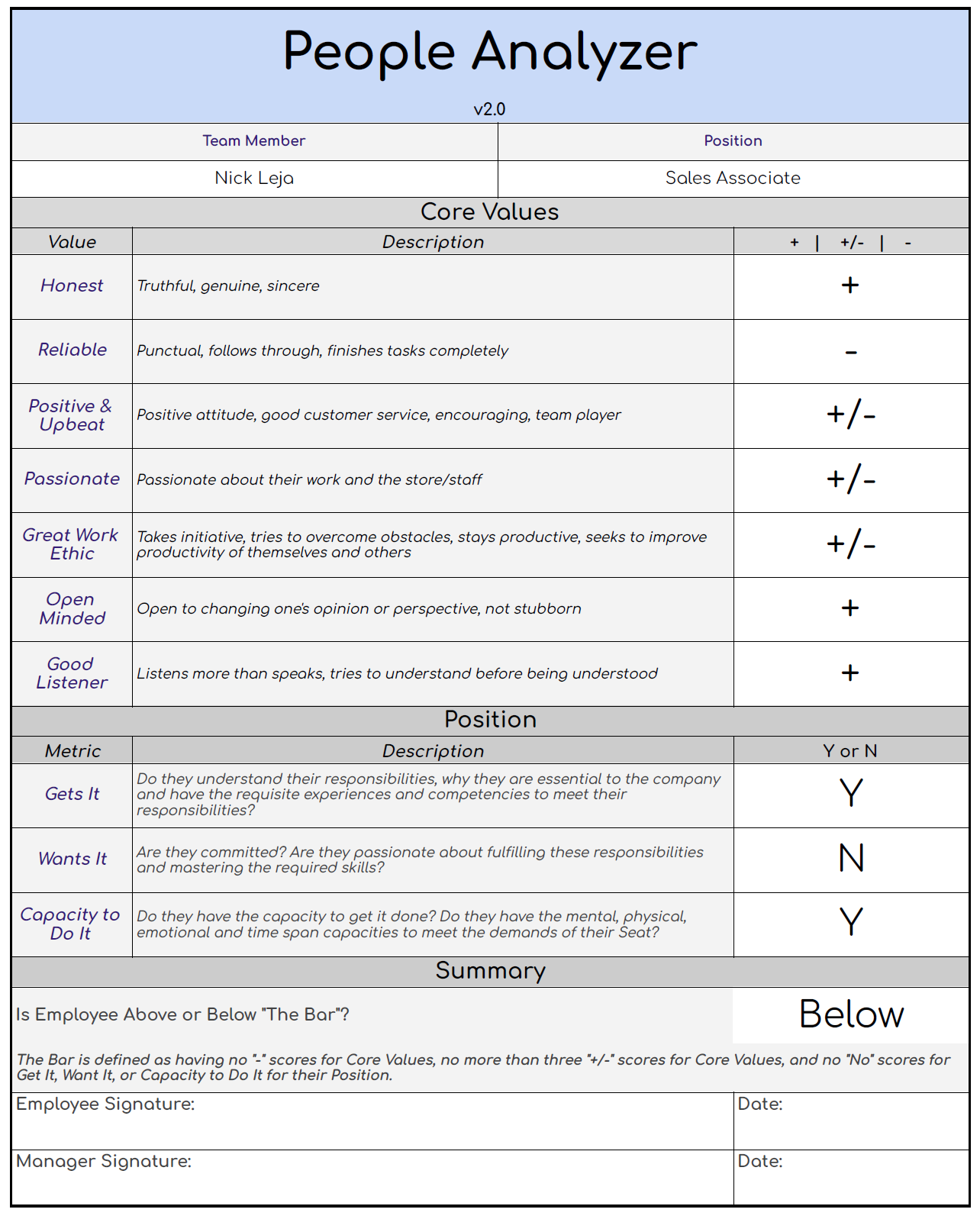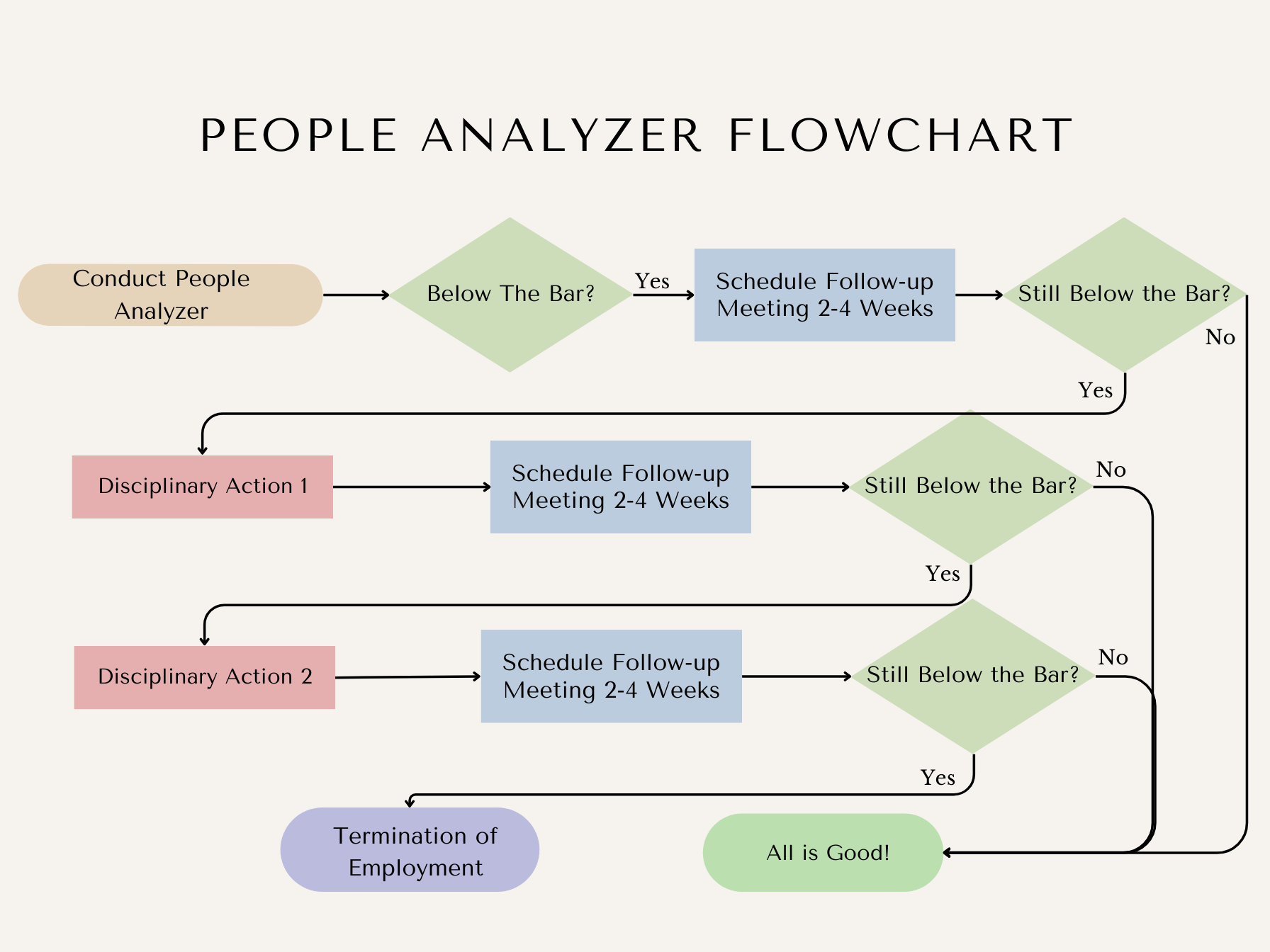Managing to Core Values
- nick.leja
- |October 13, 2023
- |Business
Managing to Core Values has had a profound impact on my ability to place the right individuals in the right roles within my companies (getting the right people in the right seats). This wasn’t just a minor adjustment; it was a seismic shift in how we construct and nurture our teams, which has led to significant improvements.
Before embracing Core Values as a guiding principle, I found myself in a challenging situation. I had team members who clearly didn’t align with our values but were not technically violating any of our handbook policies. It turned into a waiting game with me waiting for them to violate some policy so I could initiate the disciplinary process.
This approach resulted in toxic or unproductive team members remaining in the workplace for extended periods, causing harm to the overall team morale.
Once I transitioned to managing based on Core Values, the transformation was immediate. Most problematic team members voluntarily left within three months, and high-performing individuals became notably more motivated.
Here’s how to do it:

Create Core Values
The initial step is to work together with your team to craft your Core Values, and it’s advisable to keep them to no more than seven. Ours have evolved over time and currently stand as follows:
- Honest
- Reliable
- Passaionte
- Open Minded
- Good Listener
- Great Work Ethic
- Positive & Upbeat
When I first did this, it felt like a waste of time. Core Values appeared to be mere feel-good words, abstract concepts lacking any tangible benefits.
I was wrong.
Implement Quarterly People Analyzers
On a quarterly basis, we conduct a People Analyzer on everyone in the company (including the leaders… including me).
During this analysis, managers should assess each team member against our Core Values using the following ratings:
- “+” = the team member exhibits this Core Value most of the time
- “+/-” = the team member exhibits this Core Value some of the time
- “-” = the team member generally does not exhibit this Core Value
It’s important to note that a “+” doesn’t imply they always exhibit the Core Value, and a “-” doesn’t mean they never do. We all have good and bad days.
Additionally, the People Analyzer assesses each team member’s suitability for their specific role within the company. This evaluation focuses on three key factors:
- Get It: Does the team member understand their role?
- Want It: Is the team member genuinely motivated and committed to their role?
- Capacity: Does the team member possess the capacity and capability to effectively perform their role?
For each of these, the team member is given either a “Yes” or “No.”
Here’s a sample People Analyzer for reference:

Define “The Bar”
- No more than three “+/-” ratings for the Core Values.
- No “-” ratings for the Core Values.
- All “Yes” ratings for Get It, Want It, and Capacity (GWC).
If a team member meets or exceeds The Bar criteria, they are considered a good fit for our company’s culture.
Handling Team Members Below “The Bar”
When team members fall below The Bar, it signifies that they are either the wrong person, in the wrong seat, or both.
If team members are above The Bar concerning Core Values but receive a “No” for GWC (Get It, Want It, Capacity), it suggests that they are indeed the right person for the company but are currently placed in the wrong seat. The ideal approach is to seek a different role or position where they can excel and contribute effectively.
However, if they’re below The Bar with respect to Core Values, they are the wrong person for the company.
When a team member falls below The Bar, here’s a structured approach to address the situation:
1. One-on-One Meeting: Schedule a one-on-one meeting with the team member to discuss their People Analyzer results. Explain the ratings and provide them with clear feedback.
2. Identify Obstacles: Explore whether there are any factors within the company that might be hindering their performance. Discuss their understanding of their role, expectations, training, tools, and resource needs. If they’re identified as the right person but in the wrong seat, discuss other potential positions they might be interested in.
3. Mutual Game Plan: Collaboratively create a plan to help the team member rise above The Bar. This plan may include actions both the manager and the team member should take to improve the situation.
4. Schedule Follow-Up: Set a follow-up meeting to conduct another People Analyzer in 2-4 weeks. Ensure that this follow-up meeting is scheduled and added to both calendars before ending the meeting.
5. Follow-Up Assessment: In the follow-up meeting, reevaluate the team member’s status against The Bar. If they are now above The Bar, the problem is resolved. If they remain below The Bar, begin the Disciplinary Process and schedule another follow-up meeting in 2-4 weeks.
6. Repeat as Necessary: Keep repeating steps 1-5 until:
- The team member is above The Bar (the desired goal)
- The team member voluntarily resigns or is terminated
Our Process
For our company, our Disciplinary Process involves two written warnings, and if the issues aren’t resolved, termination of employment. If the team member does not improve, the longest the process would take is 3 months:

A great benefit of this process is that most team members will quit before getting fired.
If someone isn’t a good cultural fit, deep down, they’ll know it. If they’re only at risk of being fired for making mistakes, many will try to hang on, hoping to avoid any further errors (or at least to avoid getting caught). But when the issue is a poor cultural fit, it’s much harder to conceal.
This process also focuses on what’s most important: recognizing team members who align well with our Core Values rather than those who make the fewest mistakes. I’d rather have a team member who strongly embodies our Core Values, even if they make occasional mistakes, over a toxic team member who simply plays it safe to avoid trouble.
Updating the Handbook
We’ve updated our handbook to identify the Core Values, the People Analyzer, The Bar, and the process to follow if someone is below The Bar. This ensures everyone understands this process and the potential outcomes of being below The Bar.
Disclaimer: I’m not a legal professional or a trained HR expert. When implementing this process, please ensure compliance with any relevant labor laws and be prepared to adjust as needed.
Warning
When we began managing to Core Values, we immediately discovered some of our long-standing members in leadership roles fell below The Bar. This led to some challenging conversations, but because everyone was involved in creating the Core Values and agreed to the process, these discussions were more uncomfortable than confrontational.
In almost every case, this was eye-opening for team members who weren’t a good fit. Most resigned peacefully and found positions with other companies that aligned better with their Core Values. This allowed both them and us to achieve more success.
If you decide to introduce this process, be prepared for tough conversations and the potential for significant changes in your team. However, it’s likely that almost everyone, including those who leave, will ultimately benefit and be better positioned for success.
For More Information on Managing to Core Values
The vast majority of this process came from Gino Wickman’s awesome Entrepreneurial Operating System (EOS). For more insight into this concept, I’d recommend reading “How to Be a Great Boss.”
Best of luck with your implementation!


